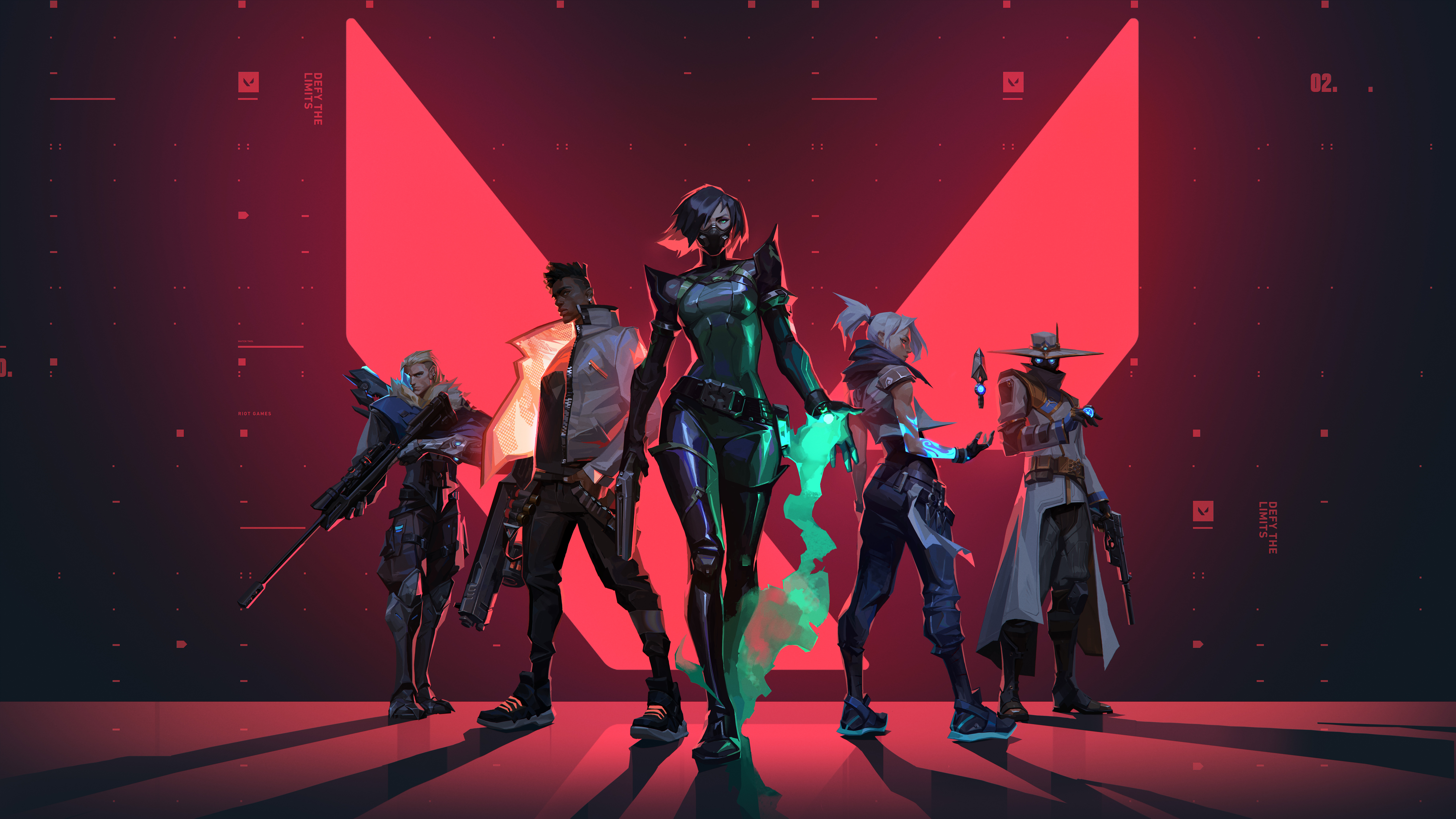Laptop Mag Verdict
Valorant is lacking a few features, but with gunplay and combat intensity that is undeniably engaging, it’s well worth playing.
Pros
- +
Satisfying gunplay
- +
Tactile abilities
- +
Colorful artstyle
- +
Good character designs
- +
Intense combat
Cons
- -
Limited maps
- -
Lacking character lore
- -
Not very original
- -
No hero skins
Why you can trust Laptop Mag
Valorant is Riot Games’ latest first-person shooter, blending elements of games like Counter Strike and Overwatch. While it lacks originality due to borrowed concepts, it makes up for it with a strong execution. Gunplay is satisfying, combat encounters are incredibly intense, and hero abilities provide subtle changes to increase the depth of gameplay without taking away from the core experience.
Spike rush
In Valorant, players compete for objectives; Attackers are tasked to plant an explosive called The Spike, while the defenders need to either eliminate each enemy or defuse the bomb. A team has to prevail in 13 rounds to completely win a match, which means games can take quite a bit of time to finish.Between each round, players earn a number of credits depending on how well they did in the round prior. With these credits, you can purchase from an arsenal of 16 different weapons or invest in your signature abilities.
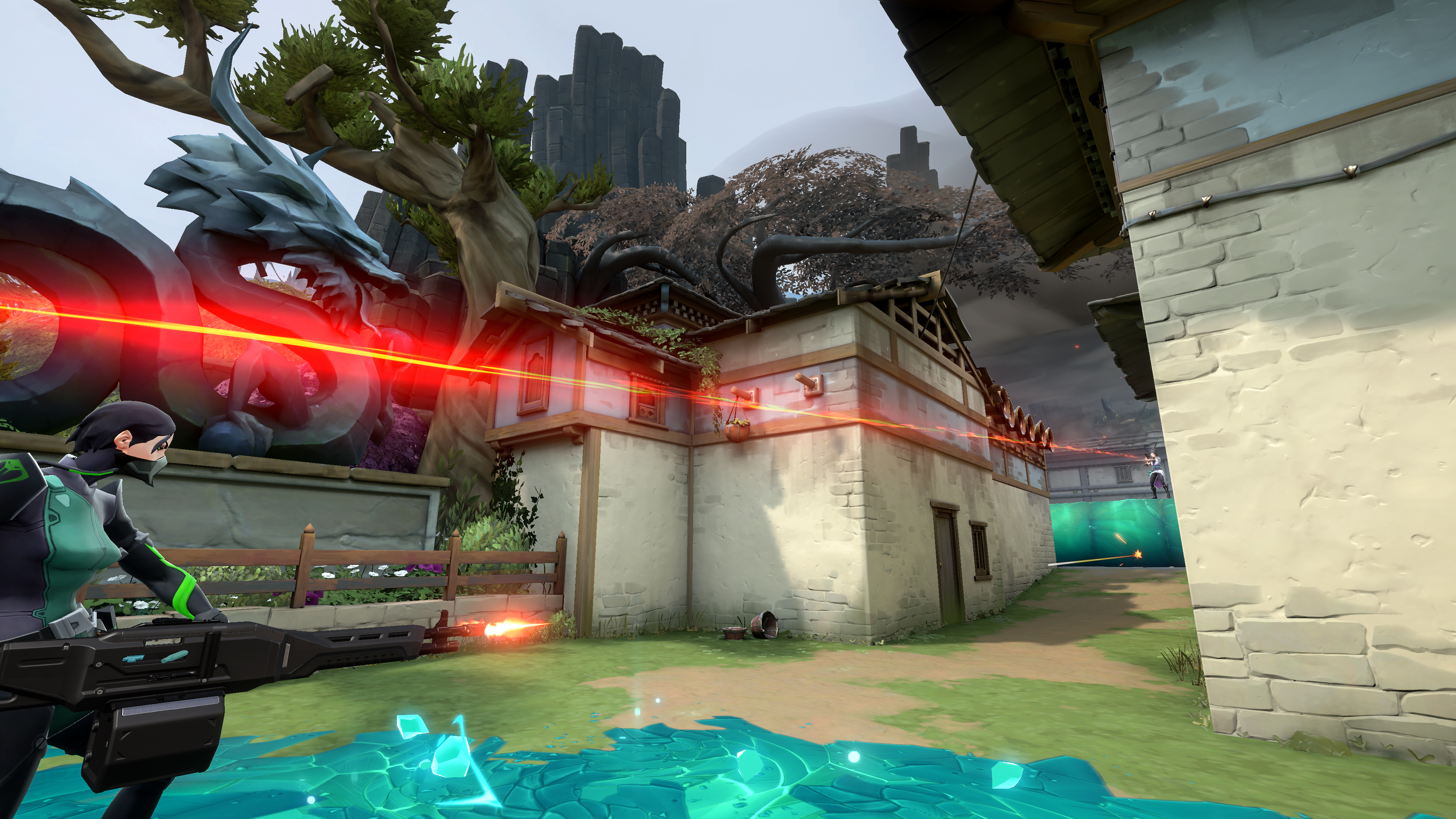
Personally, I like to dominate each match with a Marshal, a sniper-rifle that doesn’t do a great amount of damage, takes quite some time to reload and has a mediocre fire rate. So why use it? It only costs 1,100 credits, so it’s not a particularly steep investment. When I first played the game, friends told me they believed it to be the worst gun in the arsenal, so naturally, I made it my primary weapon of choice.
I don’t regret my decision, as I’ve made it my mission to encourage everyone I play with to also use a Marshal and scream “Marshal kill” over and over whenever they successfully eliminate an enemy. It has become my gimmick, to the point where I don’t even know how to use any other weapon in the game.
As the slightest mistake can get you killed, gunfights get intense pretty quickly. A single headshot from nearly any weapon is essentially an instakill, and you won’t come back to life until after the round ends (unless Sage revives you). As a result, every step you take has to be a cautious one, and the anxiety builds up each time you peek around a corner. Winning in Valorant is mostly about how quickly and accurately the player can react, as one false move can result in a devastating loss.
Agents of Valorant
With 11 agents, Valorant’s roster is decently diversified between countries of origin and practical use in combat. There are four “types,” or classes of agents. Duelists are offensive, Initiators give further sight for allies by outlining them on your teams screen, Sentinels are defensive, and Controllers are meant to block off paths and line of sight.
Although the character designs are good, it seems as if Riot Games isn’t putting as much effort into making the cast stand out. Where Overwatch treats many of its characters to cinematics, voice lines and quite a few paragraphs of backstory, Valorant barely does any of this.
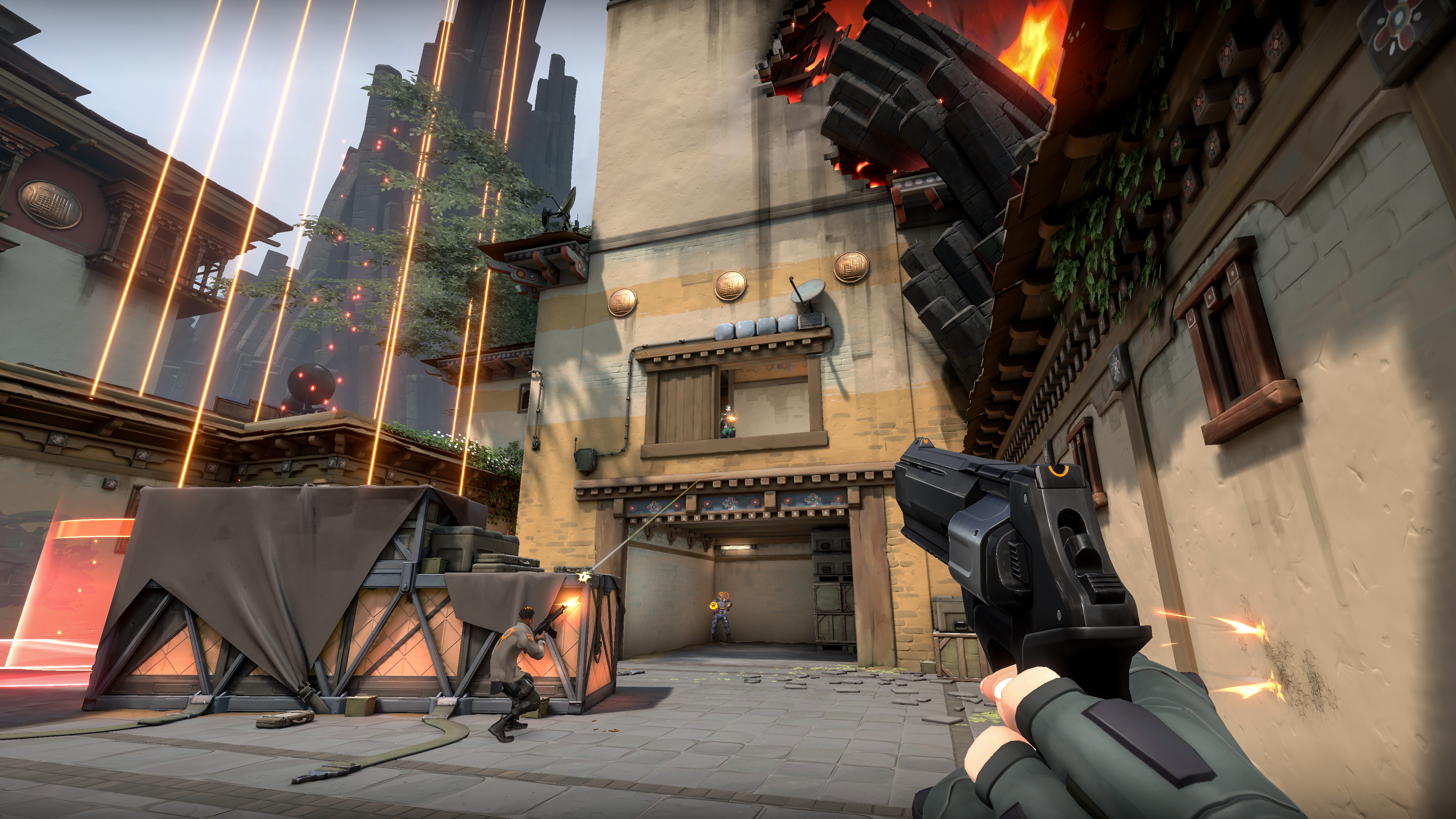
Each character does have a “biography,” but this amounts to little more than a few sentences stating their country of origin and practical use in-game. There are voice lines between characters, which is cool, but it’s not particularly effective without context. Overwatch provides its players with a further connection thanks to how it fleshes out each hero, and I’d love to feel the same way about the agents of Valorant.
Valorant is so focused on combat and gameplay that each character seems like a playable concept rather than a fleshed out person. Still, abilities aren’t the primary focus of the game, as these take a backseat to the tactile nature of gunplay. Unlike Overwatch, each character can use any weapon, and your skill set barely determines your playstyle. For example, Sage is best known for her ability to heal other players and revive teammates, but you’ll still find yourself using the character to take on the entire enemy team.
My favorite Agent is Sova, as he possesses a similar skill set to Hanzo from Overwatch. He has the ability to shoot a Recon Bolt, which can detect enemies and highlight them on your screen. It is a perfect compliment to my sniping playstyle. Additionally, his bonus ability to freely bounce arrows off of walls can be very satisfying when it miraculously finds its way into the epicenter of the enemy teams' defense. I also adore his Shock Bolt, even though I rarely hit anyone with it. I once managed a double kill, but that was me getting lucky.
Combat arenas
Valorant has four playable maps, all of which feel different aesthetically and tactically. Bind, which is a sandy industrial factory in the middle of a desert, has a design that allows for more concentrated gunfights without a lot of circling around in devious ways. Haven, on the other hand, takes place within a gorgeous asian monastery, where there’s an extra control point and a ton of methods in which enemies can sneak up behind you and execute your team without ever knowing what happened.
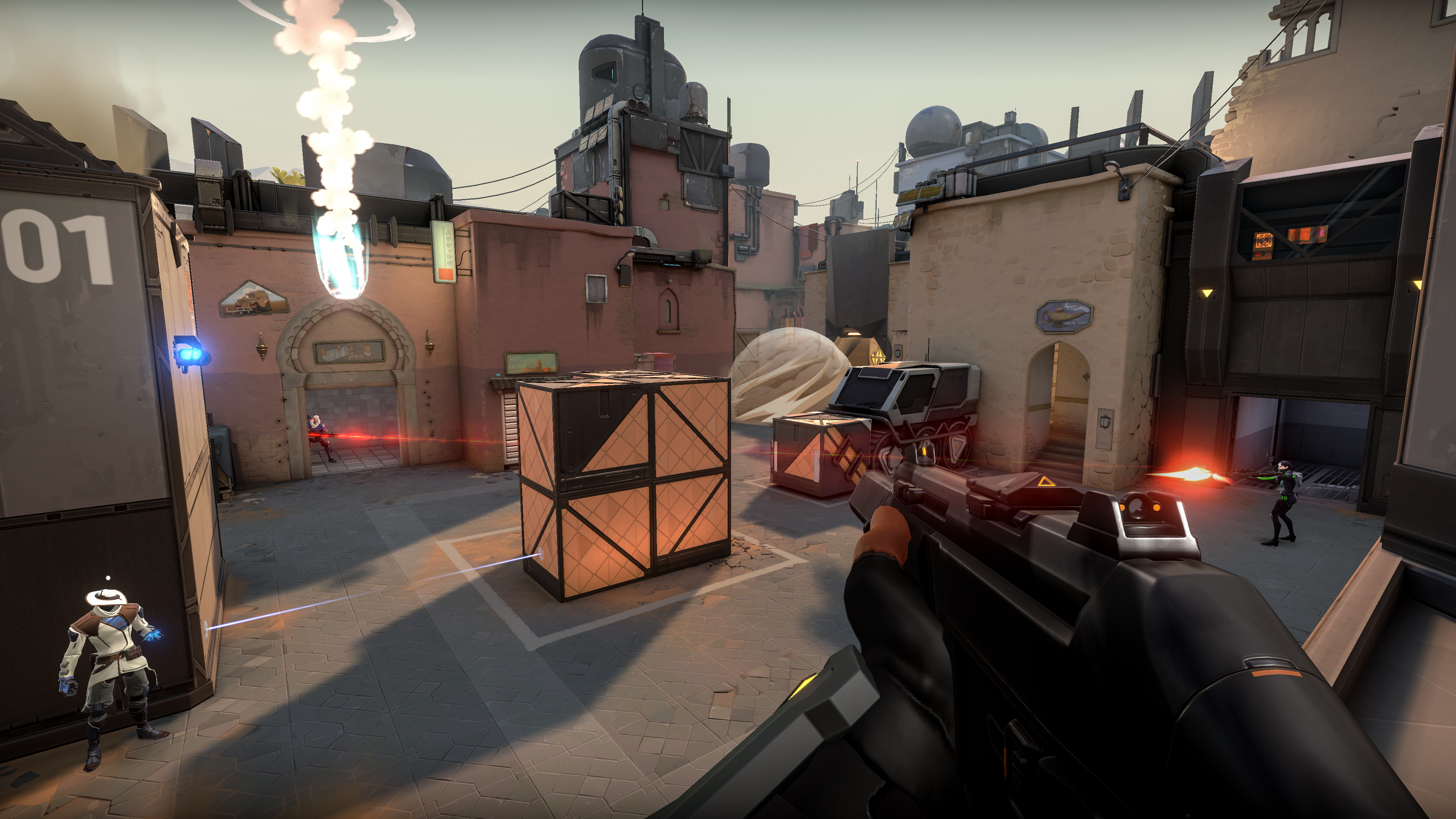
Split, which is both a traditional and modern representation of Japanese architecture, is most interesting due to its elevators, which split the map down the middle. And finally, Ascent, a floating European city, has a handful of open areas that can lead to incredibly chaotic combat scenarios between opposing teams.
Since Valorant is entirely free to play, four maps is a perfectly serviceable amount. However, Overwatch launched with 12 playable maps, some of which have three variations due to the game modes they’re coupled with, and today, the game has 28 playable maps. If Valorant expects to compete with Overwatch, it could definitely use more variety.
Art direction
Valorant’s use of color is especially nice, as the grim and muted look of something like Counter Strike can be a bit tiresome. Thankfully, they’ve taken another page out of Overwatch’s book, keeping the game lighthearted and cartoony. However, when comparing the quality of its character designs and art direction, Valorant has trouble matching the creativity and charm of Overwatch.
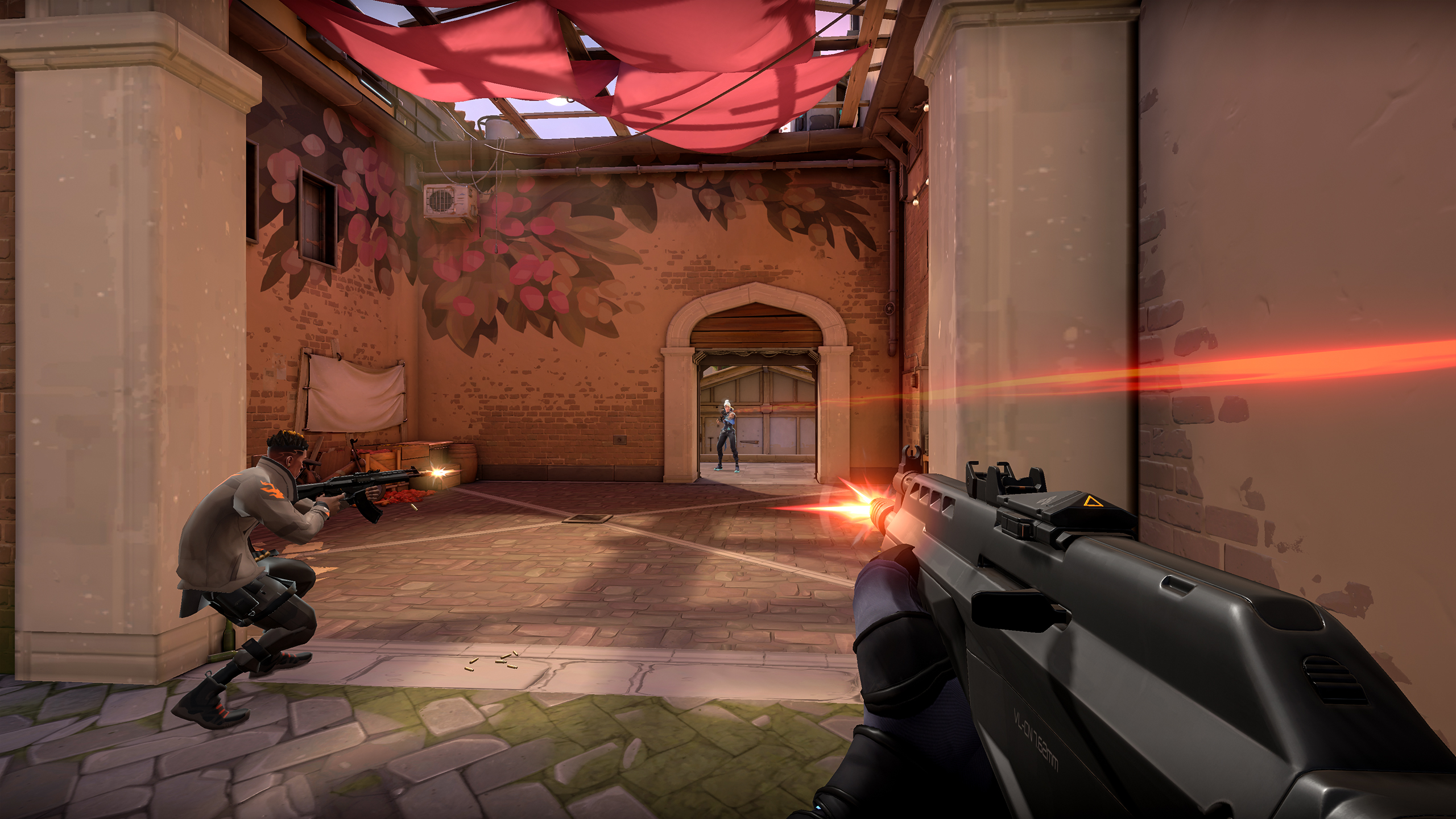
What’s lacking is that Valorant’s agents have far less variety. In Overwatch, character designs are fantastical; A Korean woman is a streaming mecha pilot, a giant Russian bodybuilder has muscle for days and there is a DJ with an anthropomorphic frog mascot using skates to climb up walls and boost around the map. In Valorant, characters come from a wide range of cultural backgrounds, but they’re conceptually basic and don’t go as far with their fun gimmicks.
Furthermore, the map design isn’t as interesting. There’s less variety in lighting, use of color and how it highlights different cultures. Overwatch takes you to a medieval castle, a French mansion, a science base in Antarctica, the heart of Hollywood––there’s even an amusement park where different Blizzard games are rides and attractions. Valorant’s map concepts are definitely serviceable, but they barely scratch the surface of what’s possible.
Unlockables
Similar to League of Legends, not every character is available from the start. After playing a few matches and gaining experience, you get two free additional characters, but the rest have to be unlocked by starting a contract with them and playing matches with the active contract. I’m not a big fan of this, as I’d rather have all of the playable characters immediately available so I can experiment with them. However, this isn’t a huge problem at the moment since there are only 11 playable characters and attaining them doesn't take much time.
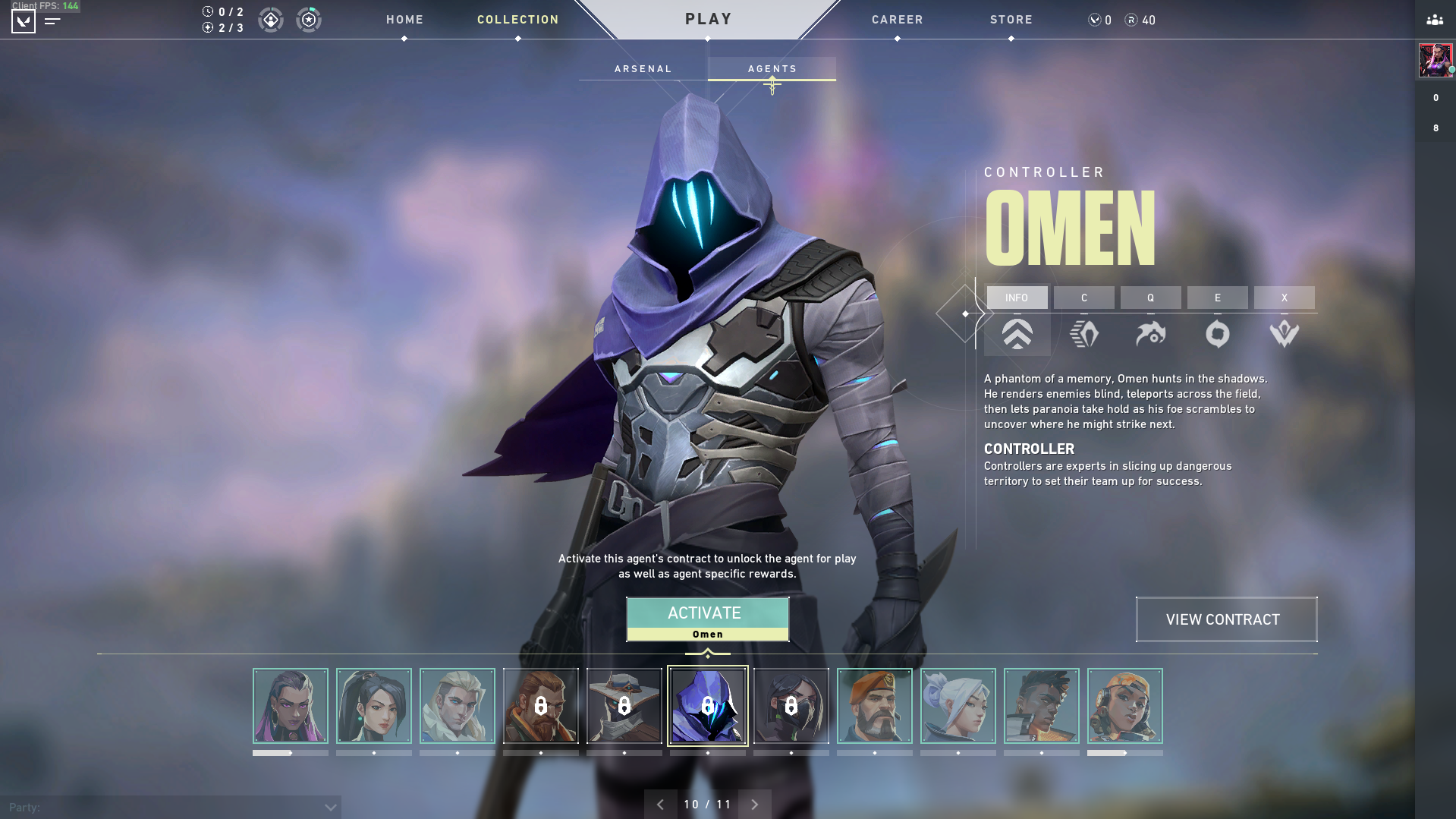
As far as cosmetics go, I hope Valorant goes a similar direction as Overwatch with how they handle character skins. At the moment, you can purchase weapon cosmetics similar to Counter-Strike, but there are no further customizations for your agents. This would help add flavor to the designs, and frankly, it’s far more exciting to personalize the look of my character rather than the decals on my sniper rifle.
Valorant: PC performance
Valorant has been a largely bugless experience for me, aside from a time when my game completely froze in the middle of a match. This only happened once and I was already dead, so it wasn’t a big deal.
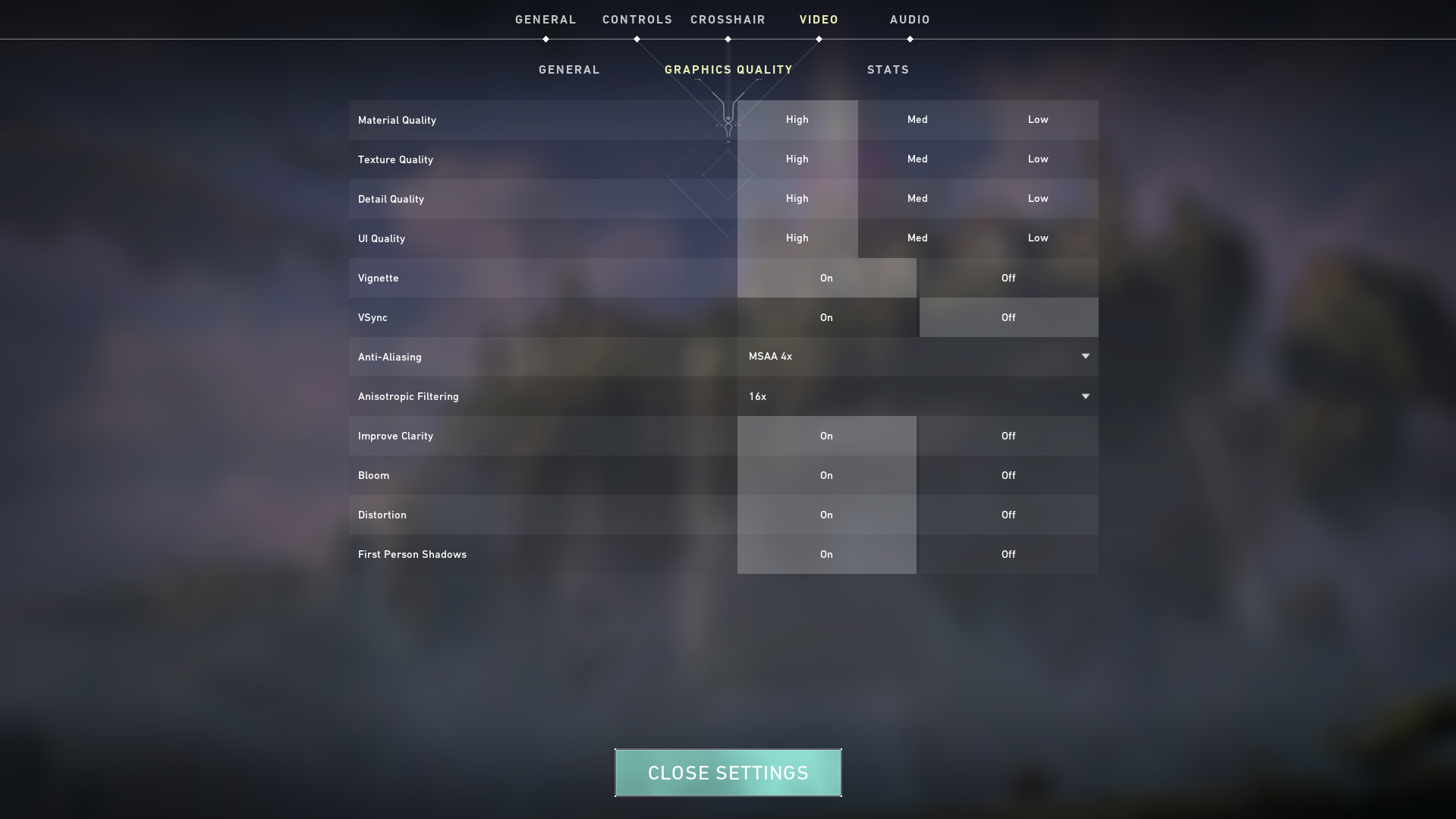
Valorant, by default, puts no cap on frames per second, but if you want to limit this number or change its max, you can. Within video settings, you can go between high, medium and low for material, detail, texture and UI quality. You can also turn vignette, vSync, improve clarity, bloom, distortion and first-person shadows on or off. And finally, anti-aliasing can go up to MSAA 4x and anisotropic filtering can go up to 16x.
Valorant: PC requirements
I ran Valorant on my desktop, which is equipped with an Nvidia GeForce GTX 970 GPU with 4GB of VRAM. With settings at their highest, my frames per second jumped between 190-230, and never dropped any lower. However, I experienced one moment where the game froze for a few seconds.
The minimum requirements to run Valorant include Windows 7, an Intel Core 2 Duo E8400, Intel HD 4000, 4GB of RAM and 8GB of available space. Essentially, the game can run on incredibly weak hardware.
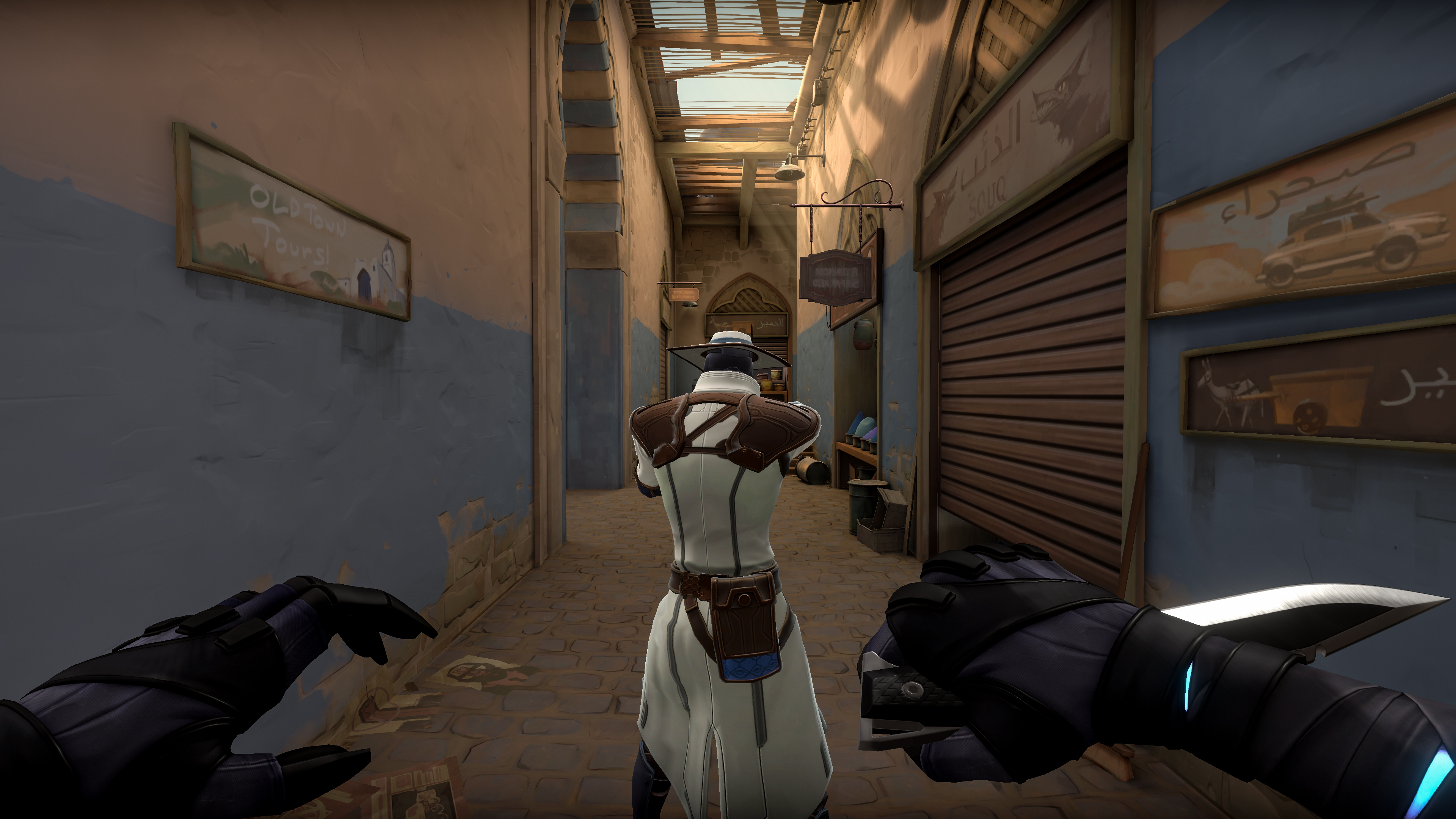
The recommended requirements include Windows 7, an Intel Core i5-4460 3.2GHZ, an Nvidia Geforce GTX 1050 Ti, 4GB of RAM and 8GB of available storage space
Verdict
Valorant’s greatest accomplishment is its ability to mash up different styles of games and actually come out with a worthwhile product, but that's also what makes it less interesting. Even when playing, it’s hard to shake off the feeling that much of the game was taken directly from Counter-Strike or Overwatch. While this isn’t a big deal, it would be nice to see Valorant build its own identity over time.
Otherwise, Valorant’s gunplay is intense, abilities are tactical without being overwhelming, and character designs are pretty good. If you’re someone who’s always been skilled at aiming and flicking your wrist to get swift headshots, Valorant is the game for you.

Self-described art critic and unabashedly pretentious, Claire finds joy in impassioned ramblings about her closeness to video games. She has a bachelor’s degree in Journalism & Media Studies from Brooklyn College and five years of experience in entertainment journalism. Claire is a stalwart defender of the importance found in subjectivity and spends most days overwhelmed with excitement for the past, present and future of gaming. When she isn't writing or playing Dark Souls, she can be found eating chicken fettuccine alfredo and watching anime.
